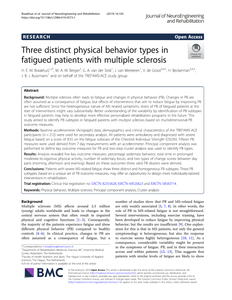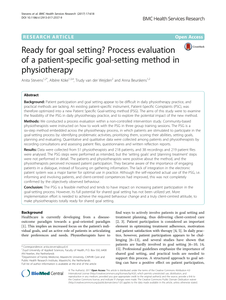This paper aims to quantify the evolution of damage in masonry walls under induced seismicity. A damage index equation, which is a function of the evolution of shear slippage and opening of the mortar joints, as well as of the drift ratio of masonry walls, was proposed herein. Initially, a dataset of experimental tests from in-plane quasi-static and cyclic tests on masonry walls was considered. The experimentally obtained crack patterns were investigated and their correlation with damage propagation was studied. Using a software based on the Distinct Element Method, a numerical model was developed and validated against full-scale experimental tests obtained from the literature. Wall panels representing common typologies of house façades of unreinforced masonry buildings in Northern Europe i.e. near the Groningen gas field in the Netherlands, were numerically investigated. The accumulated damage within the seismic response of the masonry walls was investigated by means of representative harmonic load excitations and an incremental dynamic analysis based on induced seismicity records from Groningen region. The ability of this index to capture different damage situations is demonstrated. The proposed methodology could also be applied to quantify damage and accumulation in masonry during strong earthquakes and aftershocks too.
DOCUMENT

Background: Multiple sclerosis often leads to fatigue and changes in physical behavior (PB). Changes in PB are often assumed as a consequence of fatigue, but effects of interventions that aim to reduce fatigue by improving PB are not sufficient. Since the heterogeneous nature of MS related symptoms, levels of PB of fatigued patients at the start of interventions might vary substantially. Better understanding of the variability by identification of PB subtypes in fatigued patients may help to develop more effective personalized rehabilitation programs in the future. This study aimed to identify PB subtypes in fatigued patients with multiple sclerosis based on multidimensional PB outcome measures. Methods: Baseline accelerometer (Actigraph) data, demographics and clinical characteristics of the TREFAMS-ACE participants (n = 212) were used for secondary analysis. All patients were ambulatory and diagnosed with severe fatigue based on a score of ≥35 on the fatigue subscale of the Checklist Individual Strength (CIS20r). Fifteen PB measures were used derived from 7 day measurements with an accelerometer. Principal component analysis was performed to define key outcome measures for PB and two-step cluster analysis was used to identify PB types. Results: Analysis revealed five key outcome measures: percentage sedentary behavior, total time in prolonged moderate-to-vigorous physical activity, number of sedentary bouts, and two types of change scores between day parts (morning, afternoon and evening). Based on these outcomes three valid PB clusters were derived. Conclusions: Patients with severe MS-related fatigue show three distinct and homogeneous PB subtypes. These PB subtypes, based on a unique set of PB outcome measures, may offer an opportunity to design more individually-tailored interventions in rehabilitation.
MULTIFILE

Behaviour change design has much to gain with the integration of insights from the behavioural sciences in the design process. However, this integration needs to be done without hampering the creative process. In two rich design cases aimed at health and safety behaviour change, we describe our efforts to develop a method for theory driven design based on the Double Diamond. Our method attempts to integrate insights from the Persuasive by Design-model (PbD) for behaviour change into the entire design process. Our case studies demonstrate that our method indeed augments the integration of theory and evidence in our designs, but only if the Double Diamond process model is complemented with an evaluation phase, and insights from the PbD-model are derived using rich, well developed tools.
DOCUMENT

The sources of productivity have always been the main subject of economic debate because they are the main determinants of profitability and competitiveness. In order to improve productivity we should be able to identify the sources of productivity. This article presents a method for measuring the sources of knowledge productivity in order to give direction to knowledge management initiatives. The method is based on a theoretical framework which combines two different perspectives (economic and process) on knowledge productivity. This article presents the methodological and theoretical framework, the initial design of the method and the results of the first two case studies. The relevance of this article is that it combines the concepts of knowledge management and intellectual capital measurement in the relatively new concept of knowledge productivity.
DOCUMENT

Small and Medium Enterprises (SME) comprise 99% of the European-economy, though, most research and implementation methods concerning Business Process Management Systems (BPMS) focus on large enterprises. We create a BPMS implementation method that is suitable for SMEs. Based on three existing BPMS implementation methods and by incorporating differentiators of SMEs and large enterprises a BPMS implementation method is constructed. The constructed method is validated through a series of interviews with BPMS implementation experts. Experts agree with the constructed method though discussion arise on a more detailed level of activities in the method.
MULTIFILE

Background: Patient participation and goal setting appear to be difficult in daily physiotherapy practice, and practical methods are lacking. An existing patient-specific instrument, Patient-Specific Complaints (PSC), was therefore optimized into a new Patient Specific Goal-setting method (PSG). The aims of this study were to examine the feasibility of the PSG in daily physiotherapy practice, and to explore the potential impact of the new method. Methods: We conducted a process evaluation within a non-controlled intervention study. Community-based physiotherapists were instructed on how to work with the PSG in three group training sessions. The PSG is a six-step method embedded across the physiotherapy process, in which patients are stimulated to participate in the goal-setting process by: identifying problematic activities, prioritizing them, scoring their abilities, setting goals, planning and evaluating. Quantitative and qualitative data were collected among patients and physiotherapists by recording consultations and assessing patient files, questionnaires and written reflection reports. Results: Data were collected from 51 physiotherapists and 218 patients, and 38 recordings and 219 patient files were analysed. The PSG steps were performed as intended, but the ‘setting goals’ and ‘planning treatment’ steps were not performed in detail. The patients and physiotherapists were positive about the method, and the physiotherapists perceived increased patient participation. They became aware of the importance of engaging patients in a dialogue, instead of focusing on gathering information. The lack of integration in the electronic patient system was a major barrier for optimal use in practice. Although the self-reported actual use of the PSG, i.e. informing and involving patients, and client-centred competences had improved, this was not completely confirmed by the objectively observed behaviour. Conclusion: The PSG is a feasible method and tends to have impact on increasing patient participation in the goal-setting process. However, its full potential for shared goal setting has not been utilized yet. More implementation effort is needed to achieve the required behaviour change and a truly client-centred attitude, to make physiotherapists totally ready for shared goal setting.
DOCUMENT

Within rehabilitation, there is a great need for a simple method to monitor wheelchair use, especially whether it is active or passive. For this purpose, an existing measurement technique was extended with a method for detecting self- or attendant-pushed wheelchair propulsion. The aim of this study was to validate this new detection method by comparison with manual annotation of wheelchair use. Twenty-four amputation and stroke patients completed a semi-structured course of active and passive wheelchair use. Based on a machine learning approach, a method was developed that detected the type of movement. The machine learning method was trained based on the data of a single-wheel sensor as well as a setup using an additional sensor on the frame. The method showed high accuracy (F1 = 0.886, frame and wheel sensor) even if only a single wheel sensor was used (F1 = 0.827). The developed and validated measurement method is ideally suited to easily determine wheelchair use and the corresponding activity level of patients in rehabilitation.
DOCUMENT

Emergency care (from ambulance to emergency room) is focused on somatic care: fixing the body. When a patient with mental dysregulation who experiences ‘disproportionate feelings like fear, anger, sadness or confusion, possibly with associated behaviours’ (Van de Glind et al. 2023) does not get appropriate attention, this can result in the disruption of treatment and even psychological trauma upon trauma. To improve the emergency care process, the authors of this paper - health researchers and design researchers engaged in a project based on the experience-based co-design (EBCD) approach (Donetto et al. 2015; Bate and Robert 2007). EBCD is a method used to design better experiences in healthcare settings, in cooperation with (former) patients and healthcare professionals. The process of EBCD involves partnerships between stakeholders and the discovery and sensemaking of experiences through specialized methods to gain an understanding of the interface between user and service, to design new experiences (Bate and Robert 2007, 31). There is, however, an interesting challenge in bringing patients and care professionals together. In emergency care, patients depend greatly on their healthcare providers. The patients in this study had existing mental vulnerabilities and may have been traumatized by previous visits. We needed to enable these stakeholders to be equal partners with ownership and power, one of the characteristics of co-design in EBCD (Donetto et al. 2015). In this paper, we describe how we adapted and applied the EBCD method, with a focus on creating equal partnerships. We also reflect on the extent of our success and the diBiculties we encountered in attaining this objective.
DOCUMENT

This investigation explores relations between 1) a theory of human cognition, called Embodied Cognition, 2) the design of interactive systems and 3) the practice of ‘creative group meetings’ (of which the so-called ‘brainstorm’ is perhaps the best-known example). The investigation is one of Research-through-Design (Overbeeke et al., 2006). This means that, together with students and external stakeholders, I designed two interactive prototypes. Both systems contain a ‘mix’ of both physical and digital forms. Both are designed to be tools in creative meeting sessions, or brainstorms. The tools are meant to form a natural, element in the physical meeting space. The function of these devices is to support the formation of shared insight: that is, the tools should support the process by which participants together, during the activity, get a better grip on the design challenge that they are faced with. Over a series of iterations I reflected on the design process and outcome, and investigated how users interacted with the prototypes.
DOCUMENT

In the knowledge economy knowledge productivity is the main source of competitive advantage and thus the biggest management challenge. Based on a review of the concept from two distinct perspectives, knowledge productivity is defined as the process of knowledge-creation that leads to incremental and radical innovation. The two main elements in this definition are „the process of knowledge creation‟ and „incremental and radical innovation‟. The main aim of this chapter is to contribute to a better understanding of the concept of knowledge productivity in order to support management in designing policies for knowledge productivity enhancement. After elaborating on the concept of knowledge productivity, the two main elements are combined in a conceptual framework – the knowledge productivity flywheel. This framework appeared to be an effective model for supporting initiatives that aim for enhancing knowledge productivity.
DOCUMENT
